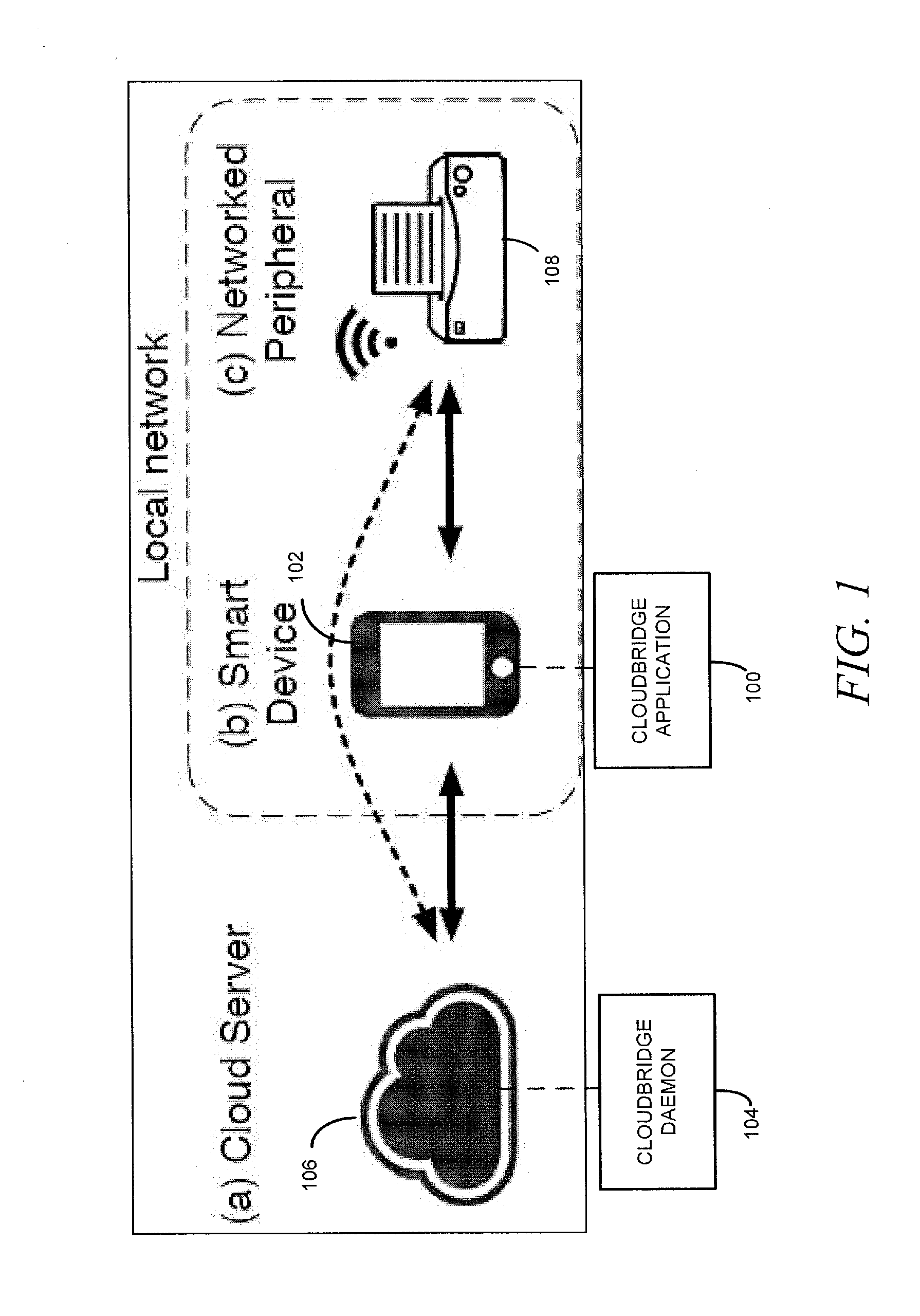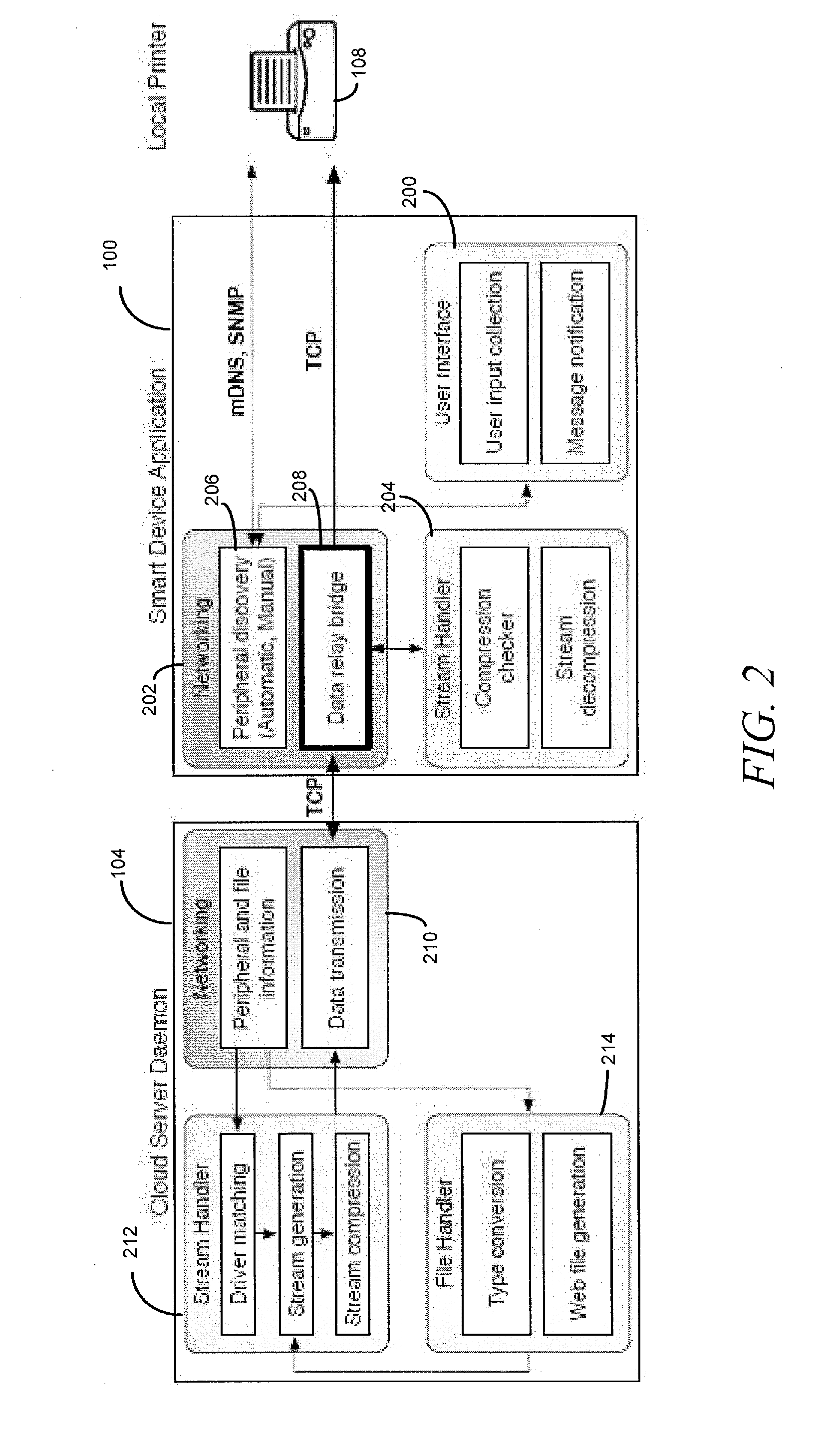Cloud powered system enabling mobile devices to control peripherals without drivers
a technology of cloud-powered systems and peripherals, applied in the field of peripheral control, can solve the problems of not meeting our independence requirement, no intuitive way to operate printers from smart devices, and existing techniques that do not perfectly achieve our goal
- Summary
- Abstract
- Description
- Claims
- Application Information
AI Technical Summary
Benefits of technology
Problems solved by technology
Method used
Image
Examples
Embodiment Construction
[0023]CloudBridge enables peripheral support in smart devices in a way that is universally applicable and completely independent from local PCs. It also provides indistinguishable experiences to users while controlling peripherals comparing to that from a conventional PC. The CloudBridge system includes an application 100 for a smart device 102 and a daemon 104 for a cloud server 106. As shown in FIG. 1, application 100 running on smart device 102 sets up TCP sockets to peripheral 108 and to cloud server 106 with the CloudBridge daemon 104. Using the sockets connecting both sides, CloudBridge application 100 configures smart device 102 to operate as a transparent bridge, allowing cloud server 106 with an appropriate driver to talk to the peripheral 108. Since cloud server 106 is assumed to have drivers for all candidate peripherals in the market and is controlled by application 100, the peripherals become immediately accessible from smart device users. The proposed system can be use...
PUM
 Login to View More
Login to View More Abstract
Description
Claims
Application Information
 Login to View More
Login to View More - R&D
- Intellectual Property
- Life Sciences
- Materials
- Tech Scout
- Unparalleled Data Quality
- Higher Quality Content
- 60% Fewer Hallucinations
Browse by: Latest US Patents, China's latest patents, Technical Efficacy Thesaurus, Application Domain, Technology Topic, Popular Technical Reports.
© 2025 PatSnap. All rights reserved.Legal|Privacy policy|Modern Slavery Act Transparency Statement|Sitemap|About US| Contact US: help@patsnap.com



